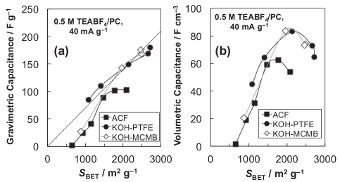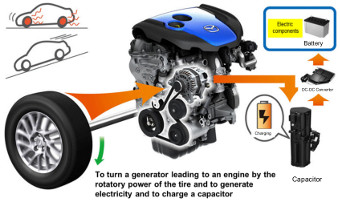Volume 62, Issue 12
Special Feature : Present Status and Future Perspective of Electrochemical Capacitors
Displaying 1-14 of 14 articles from this issue
- |<
- <
- 1
- >
- >|
Preface
-
2019 Volume 62 Issue 12 Pages 697
Published: December 10, 2019
Released on J-STAGE: December 10, 2019
Download PDF (309K)
Special Feature : Present Status and Future Perspective of Electrochemical Capacitors
-
2019 Volume 62 Issue 12 Pages 698-702
Published: December 10, 2019
Released on J-STAGE: December 10, 2019
Download PDF (1263K) -
2019 Volume 62 Issue 12 Pages 703-708
Published: December 10, 2019
Released on J-STAGE: December 10, 2019
Download PDF (1754K) -
2019 Volume 62 Issue 12 Pages 709-713
Published: December 10, 2019
Released on J-STAGE: December 10, 2019
Download PDF (3496K) -
2019 Volume 62 Issue 12 Pages 714-717
Published: December 10, 2019
Released on J-STAGE: December 10, 2019
Download PDF (1181K) -
 2019 Volume 62 Issue 12 Pages 718-723
2019 Volume 62 Issue 12 Pages 718-723
Published: December 10, 2019
Released on J-STAGE: December 10, 2019
Regular article
-
2019 Volume 62 Issue 12 Pages 724-730
Published: December 10, 2019
Released on J-STAGE: December 10, 2019
Download PDF (1505K)
Planning Series
Japanese Food Culture
-
2019 Volume 62 Issue 12 Pages 731-733
Published: December 10, 2019
Released on J-STAGE: December 10, 2019
Download PDF (510K)
Report
Conference Reports
-
2019 Volume 62 Issue 12 Pages 734
Published: December 10, 2019
Released on J-STAGE: December 10, 2019
Download PDF (549K) -
2019 Volume 62 Issue 12 Pages 735
Published: December 10, 2019
Released on J-STAGE: December 10, 2019
Download PDF (667K) -
2019 Volume 62 Issue 12 Pages 736-739
Published: December 10, 2019
Released on J-STAGE: December 10, 2019
Download PDF (1157K)
Science Café
Research Abroad
-
2019 Volume 62 Issue 12 Pages 740-741
Published: December 10, 2019
Released on J-STAGE: December 10, 2019
Download PDF (456K)
News & Trends
-
2019 Volume 62 Issue 12 Pages 742
Published: December 10, 2019
Released on J-STAGE: December 10, 2019
Download PDF (330K)
Memorial
-
2019 Volume 62 Issue 12 Pages 743-744
Published: December 10, 2019
Released on J-STAGE: December 10, 2019
Download PDF (574K)
- |<
- <
- 1
- >
- >|






